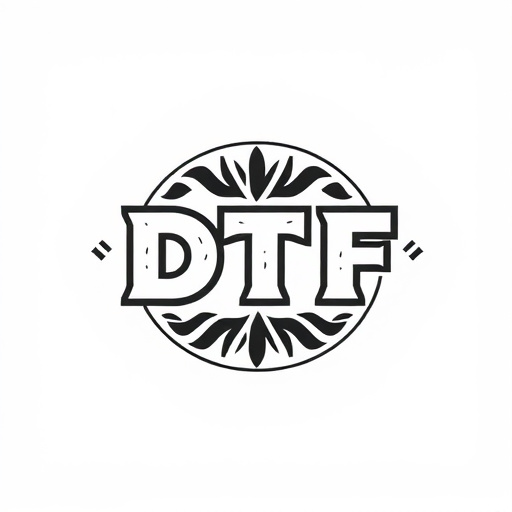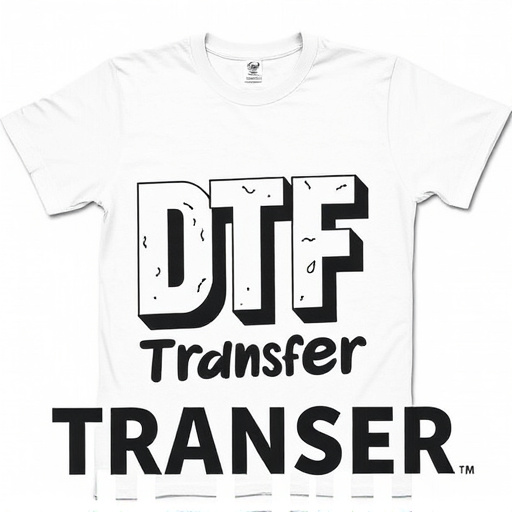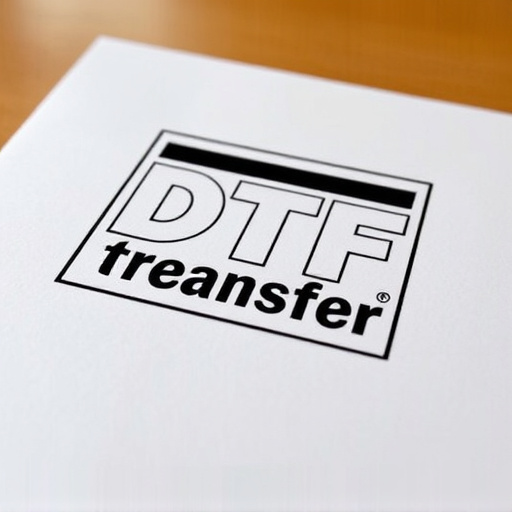Direct-to-Fabric (DTF) transfer printing is revolutionizing print-on-demand services with its ability to deliver intricate, vibrant prints on polyester fabrics. This process involves carefully selecting polymers and preparing fabric surfaces for optimal adhesion. DTF offers exceptional quality, durability, and versatility, catering to various industries like fashion, home decor, and sports apparel. As a cutting-edge technology, DTF printing continues to evolve with advancements in materials, inks, and efficiency, while addressing environmental concerns. Its growing popularity suggests a promising future in custom product design and production.
“Unleashing a new era of fabric printing, DTF (Direct-to-Fabric) Transfer technology is transforming the industry. This innovative process allows for high-quality prints directly onto polyester fabrics, offering unmatched durability and versatility. Our article delves into the science and technology behind DTF’s adherence to polyester, exploring its advantages over traditional methods. We’ll guide you through the application process, from design to final print, and uncover real-world use cases, all while discussing future trends that are shaping this exciting DTF Printing revolution.”
- Understanding DTF Transfer Technology: A Revolution in Print-on-Demand
- The Science Behind Adhering to Polyester: Factors and Formulations
- Advantages of DTF for Fabric Printing: Quality, Durability, Versatility
- Application Process: From Design to Final DTF Print on Polyester
- Industry Use Cases: Where DTF Transfers are Making an Impact
- Future Prospects: Innovations and Trends in DTF Printing Technology
Understanding DTF Transfer Technology: A Revolution in Print-on-Demand
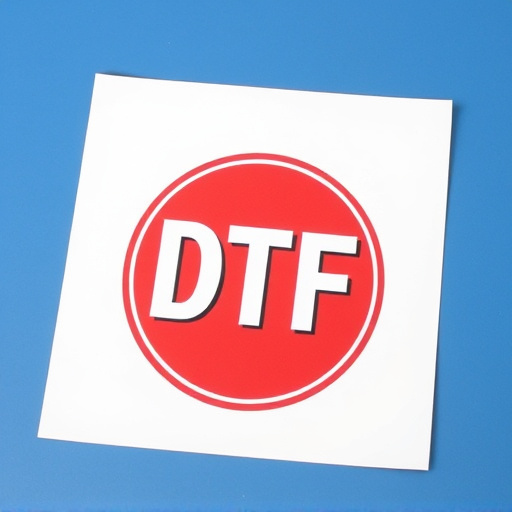
The Digital Thermal Transfer (DTF) printing process is a game-changer in the print-on-demand industry, offering unparalleled versatility and quality when it comes to fabric customization. This technology has revolutionized how we approach clothing and textile design, enabling intricate and vibrant prints on various fabrics, including polyester. DTF transfer technology allows for high-resolution digital imaging directly onto fabric surfaces, making it an attractive option for businesses and designers seeking unique, personalized products.
With DTF printing, the process involves transferring ink from a donor sheet to a heated press, which then applies the design onto the desired polyester fabric. This method ensures precise color replication, vibrant finishes, and exceptional detail, resulting in stunning DTF prints. The technology’s adaptability is remarkable, accommodating various design complexities and allowing for quick turnaround times, which is ideal for meeting the demands of contemporary consumer markets.
The Science Behind Adhering to Polyester: Factors and Formulations

The process of adhering film transfers to polyester fabrics involves a complex interplay of materials science and printing technology. DTF (Direct to Fabric) transfers, specifically designed for polyester, rely on several critical factors to ensure optimal adhesion. These include the choice of polymer in the transfer film, surface preparation of the polyester fabric, and the application method used during printing.
Formulations for DTF transfers are meticulously crafted to balance durability, color fastness, and flexibility. The polymer, usually a combination of polyesters and resins, must be compatible with both the fabric’s surface and the inks used. Surface pretreatment, such as cleaning and activators, further enhances adhesion by creating micro-roughness on the polyester, allowing the transfer film to bond more securely. DTF printing techniques, like heat pressing, then fuse the transfer onto the fabric, creating long-lasting, vibrant prints.
Advantages of DTF for Fabric Printing: Quality, Durability, Versatility
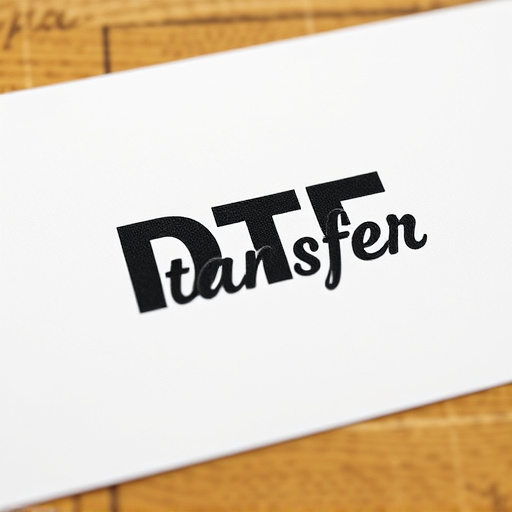
Direct-to-fabric (DTF) transfer printing offers a plethora of advantages for creating high-quality prints on polyester fabrics. One of its key strengths is the ability to produce exceptional print quality, ensuring vibrant colours and crisp details that are durable and long-lasting. This makes DTF ideal for various applications, from fashion and apparel to home decor and promotional items.
Additionally, DTF printing provides remarkable durability, making it resistant to fading and easy to maintain. The direct application of ink onto the fabric creates a strong bond, resulting in prints that are both wash-resistant and capable of withstanding the wear and tear of everyday use. Moreover, its versatility allows for printing on a wide range of polyester materials, from t-shirts and tote bags to flags and banners, catering to diverse creative needs and business requirements.
Application Process: From Design to Final DTF Print on Polyester

The process of applying a DTF (Direct to Fabric) transfer to polyester fabric involves several meticulous steps, ensuring the final print is vibrant and long-lasting. It begins with the design phase, where artists create or source the desired graphic or text. This digital artwork is then prepared for printing using specialized software, optimizing colors and resolution for the best outcome on polyester.
Once ready, the DTF transfer film, a precision-cut, heat-active adhesive sheet, is selected based on the fabric type and print requirements. The design is carefully laid onto the polyester, ensuring alignment and coverage. Heat is then applied to activate the adhesive, allowing the graphic to bond with the fabric. After cooling, the excess transfer film is removed, leaving behind a crisp, vibrant DTF print, ready for further finishing touches or wear.
Industry Use Cases: Where DTF Transfers are Making an Impact

The Direct-to-Fabric (DTF) transfer process has gained significant traction in various industries, revolutionizing the way custom designs are applied to polyester fabrics. This innovative technique allows for high-quality printing directly onto fabric, enabling businesses to create unique and personalized products with intricate details. From fashion and apparel to home décor and accessories, DTF transfers have become a game-changer for brands seeking to offer made-to-order items with fast turnaround times.
In the fashion sector, designers are utilizing DTF printing to produce limited-edition collections, allowing them to experiment with bold graphics and sustainable materials. Similarly, home goods manufacturers are embracing this technology to create custom bedding, curtains, and wall art, catering to individual consumer preferences. Additionally, DTF transfers are making waves in the sports apparel market, where teams and athletes can showcase their identities through personalized uniforms and fan merchandise. These use cases demonstrate the versatility and demand for DTF transfers, as businesses recognize the potential to enhance customer experiences while streamlining production processes.
Future Prospects: Innovations and Trends in DTF Printing Technology

The future of Direct to Fabric (DTF) printing technology looks bright and promises significant advancements in the textile industry. Innovations are driving the development of more efficient, environmentally friendly, and cost-effective DTF transfer processes. Researchers and manufacturers are exploring new materials, inks, and application methods that can further enhance the quality and durability of DTF prints. With the increasing demand for personalized, on-demand printing, DTF technology is poised to revolutionize custom apparel production.
Trends indicate a shift towards digital printing solutions, offering higher levels of detail, vibrant colors, and faster turnaround times. The integration of advanced printing machines with intelligent software will enable precise control over design placement, color accuracy, and fabric handling. Additionally, the development of water-based and eco-friendly inks is gaining traction, addressing environmental concerns while maintaining high print quality. These innovations not only cater to the growing demand for sustainable practices but also open up new possibilities for creating intricate, full-color designs on a variety of polyester fabrics.






